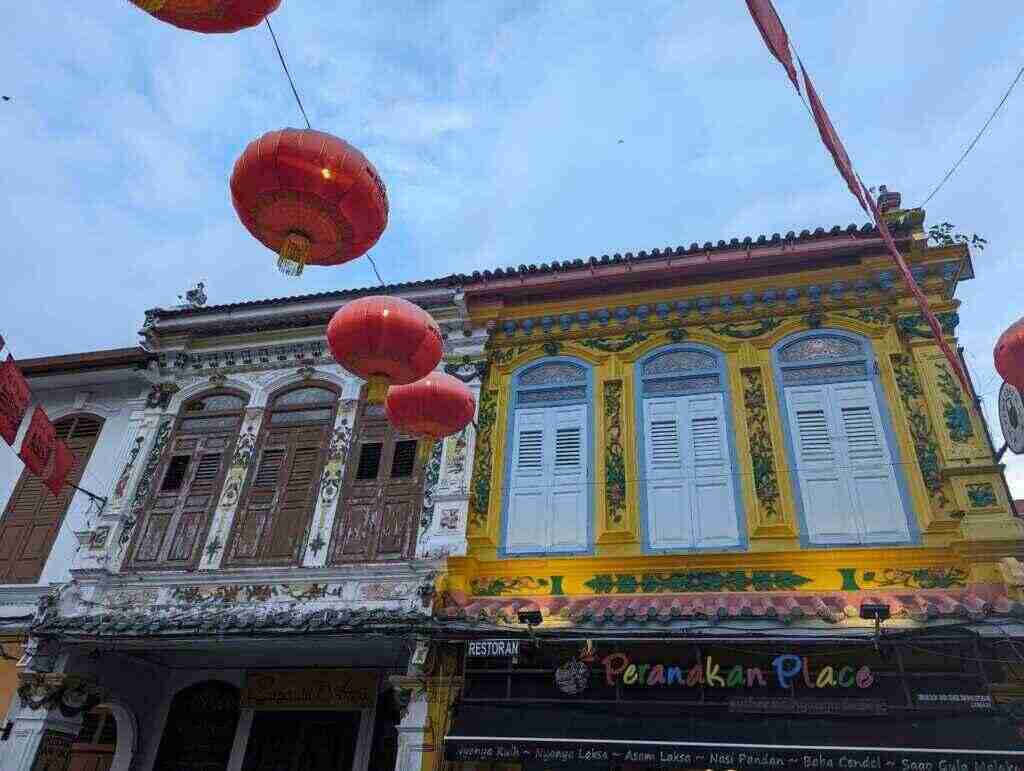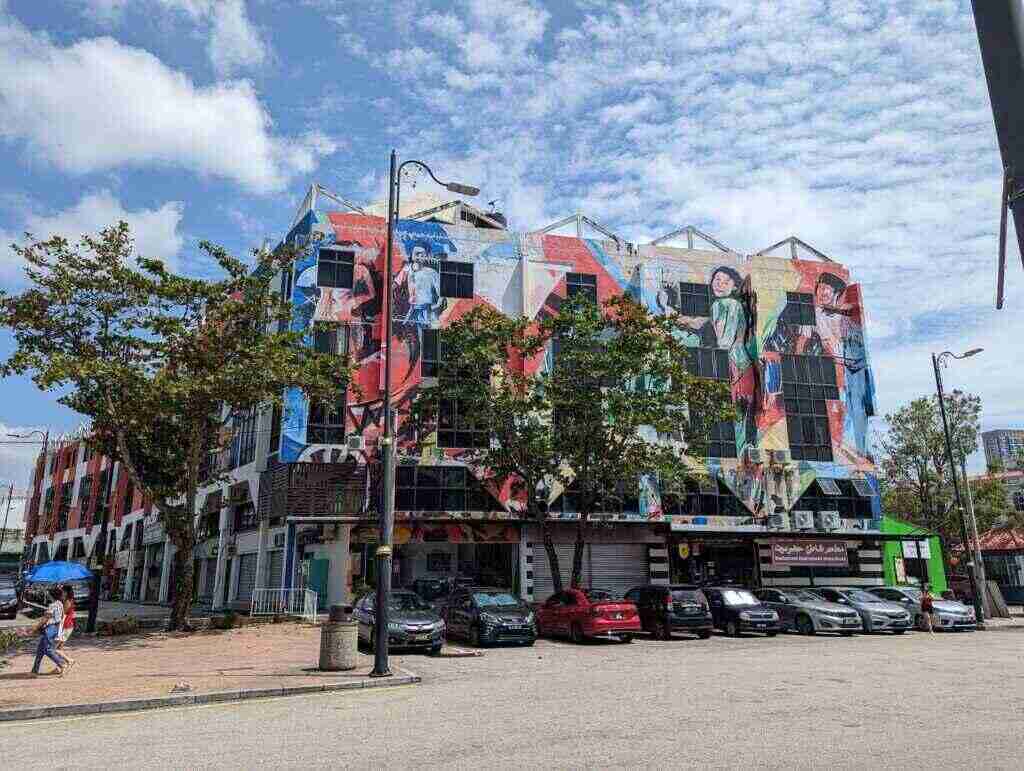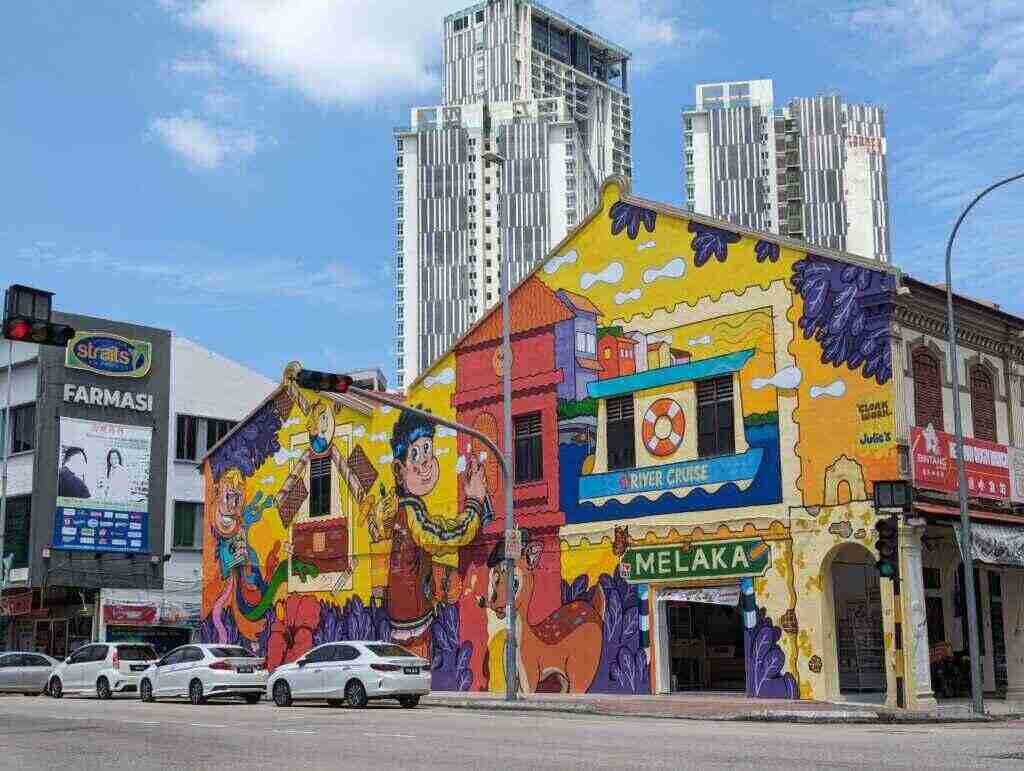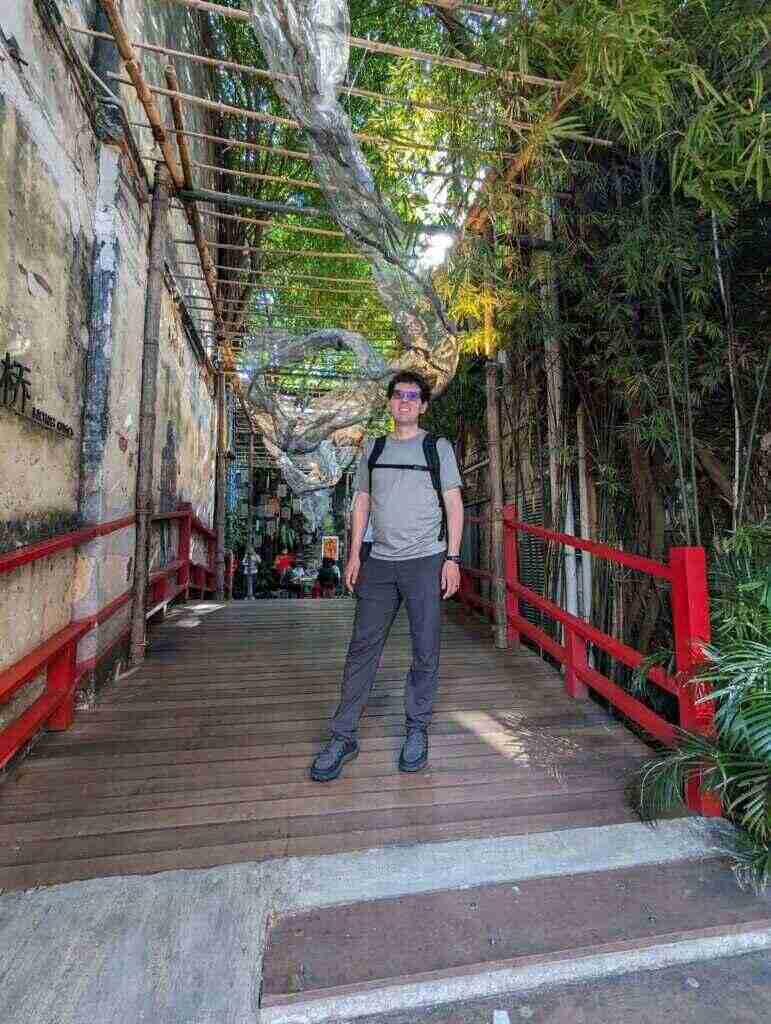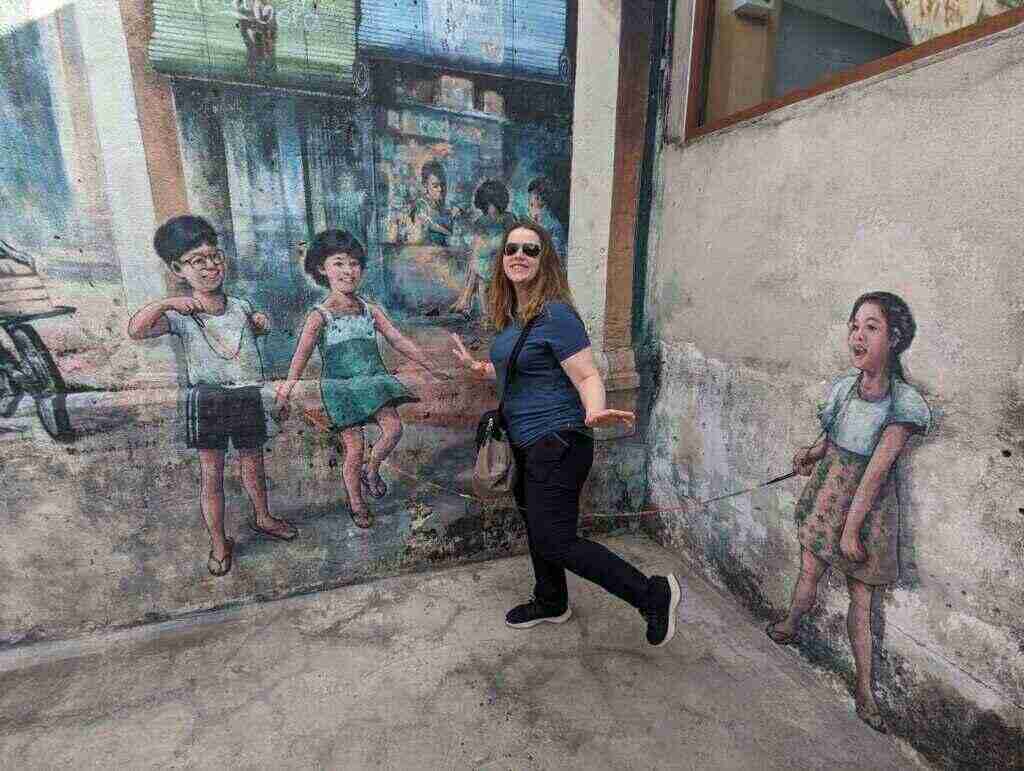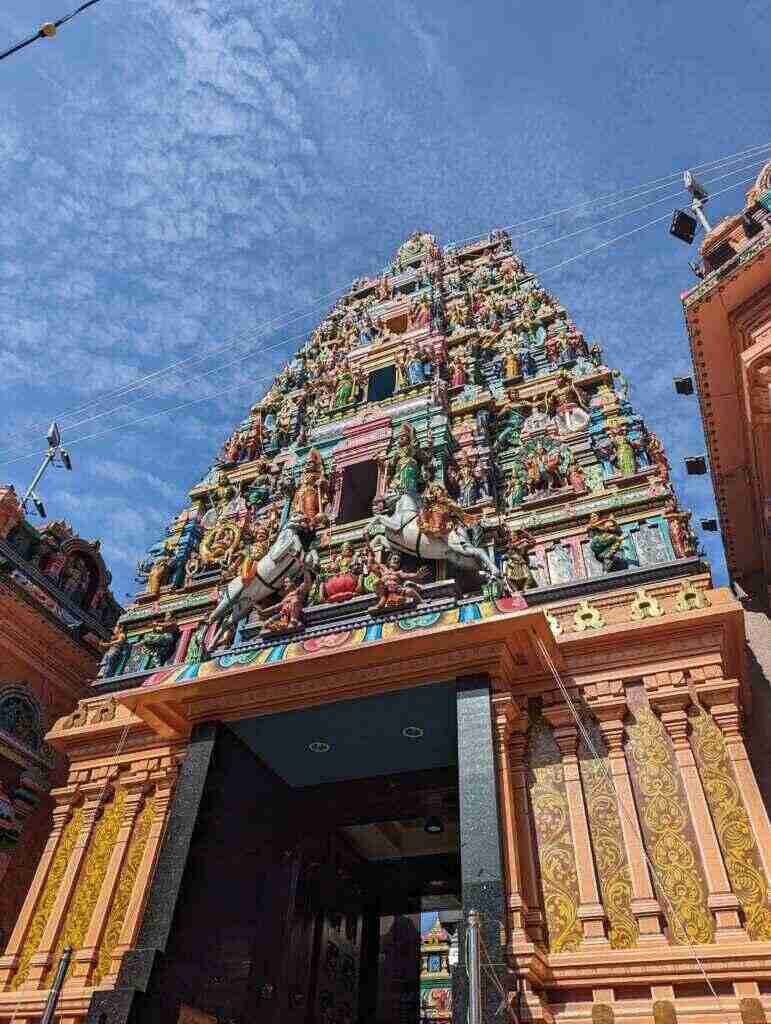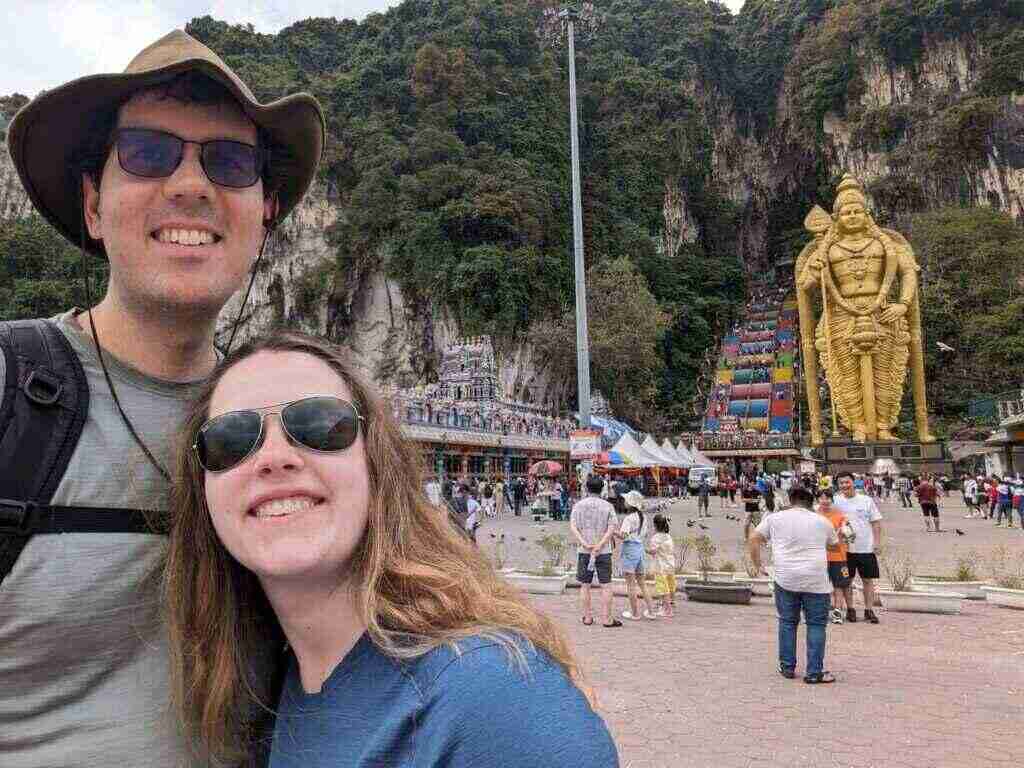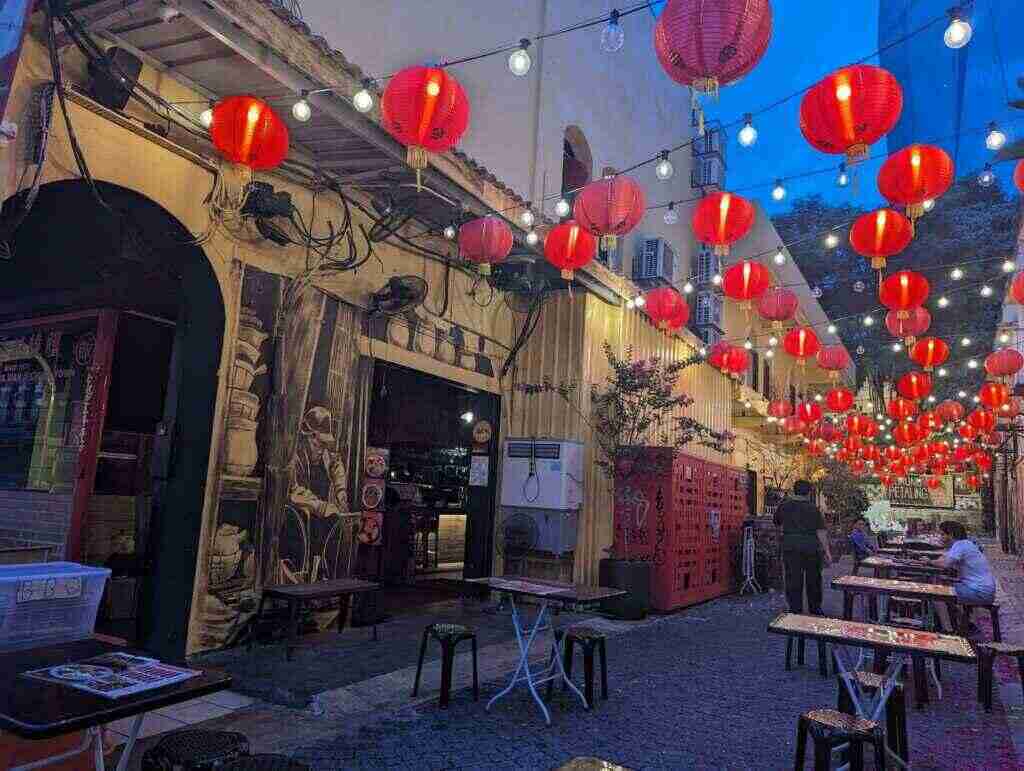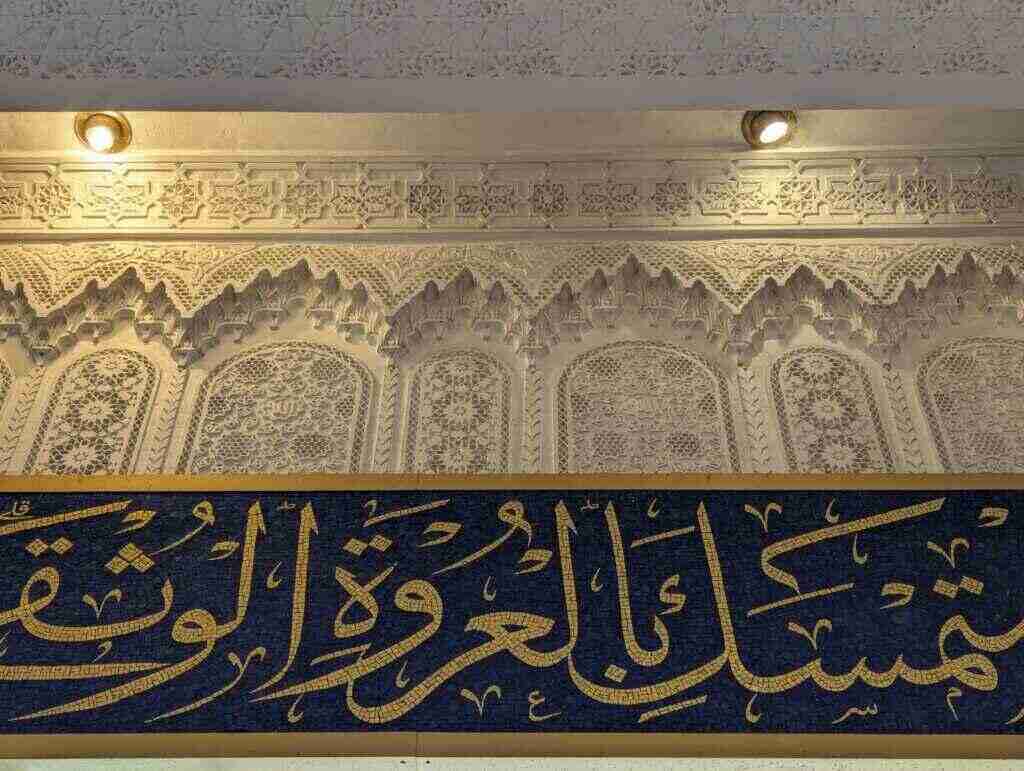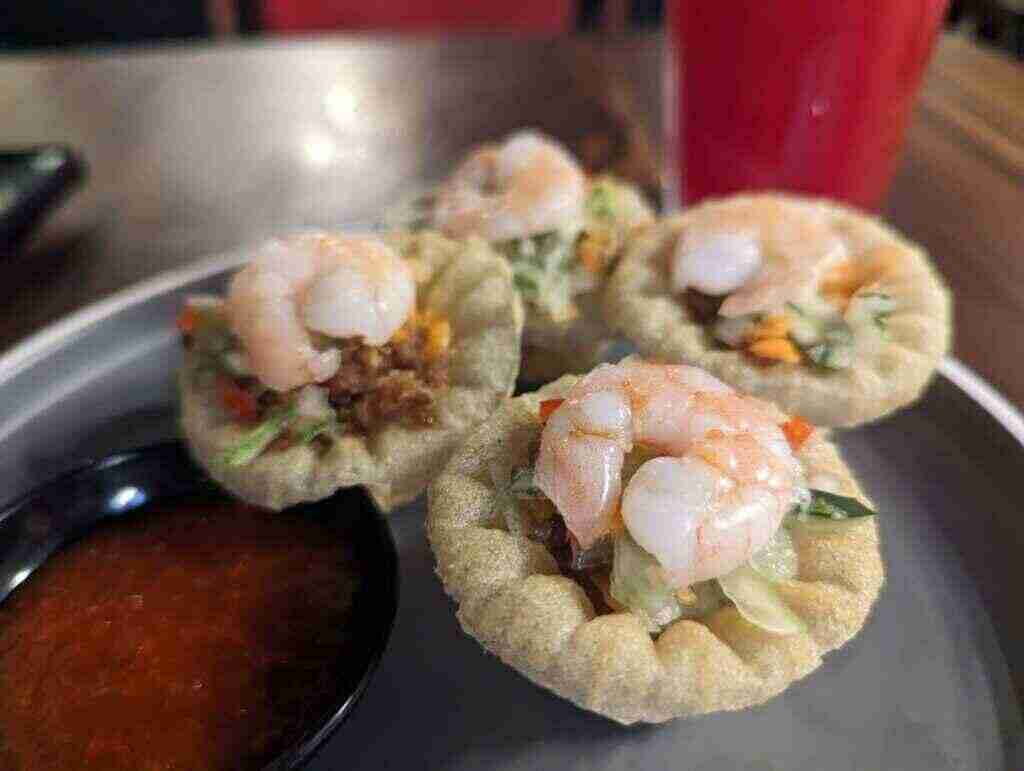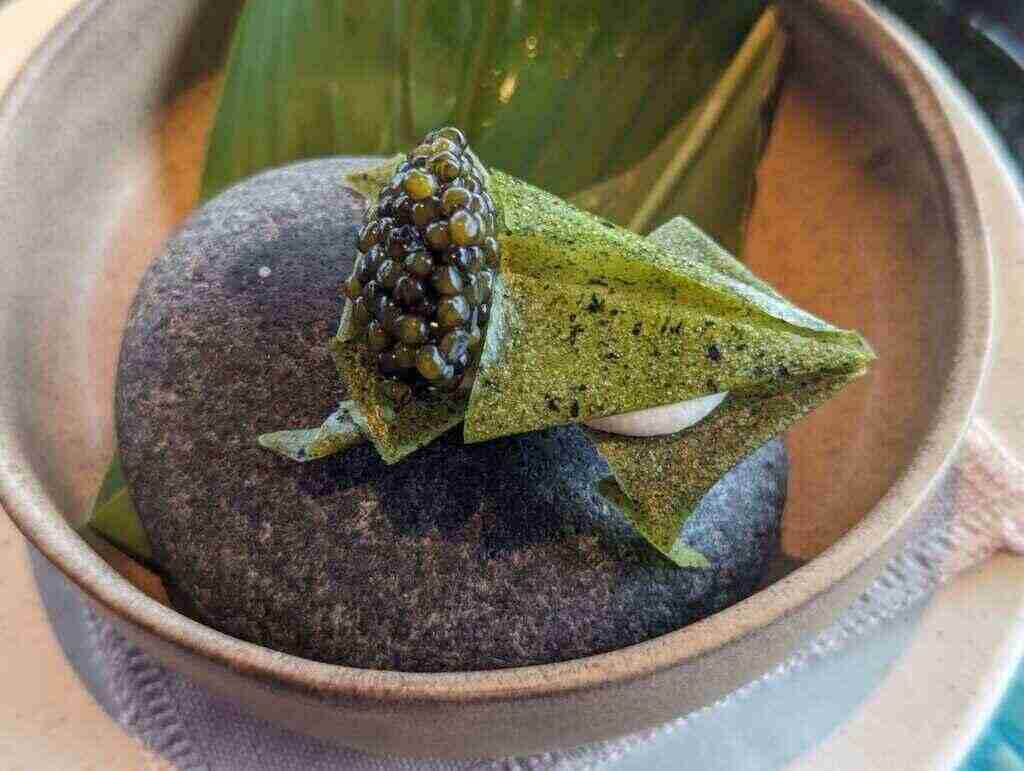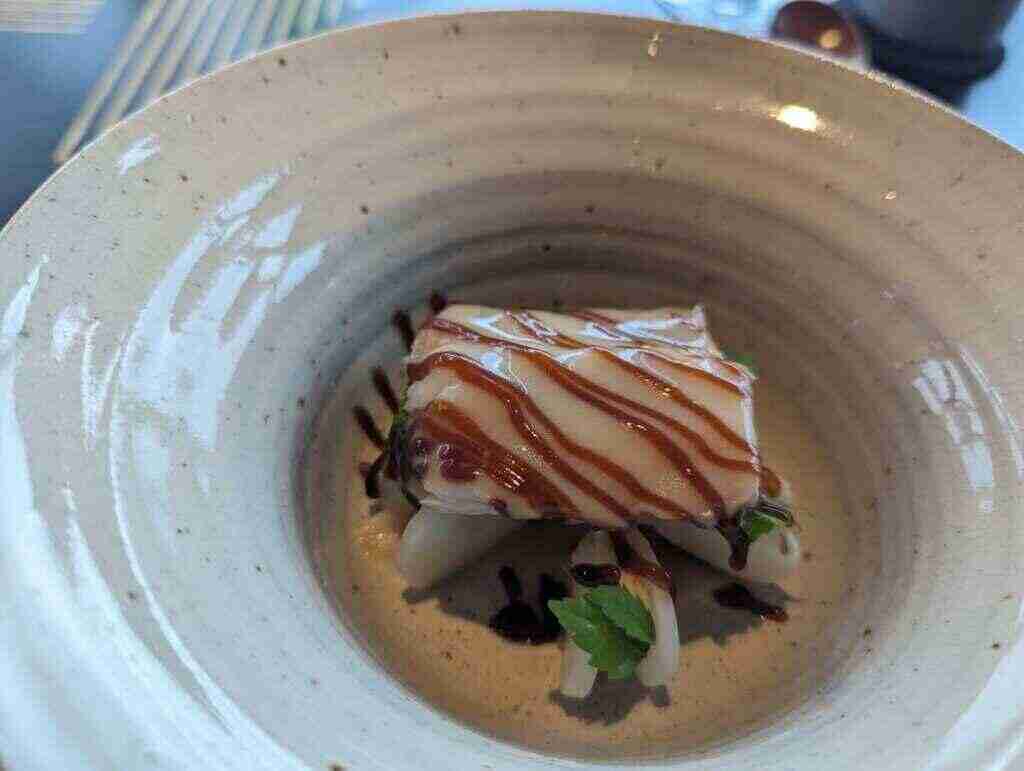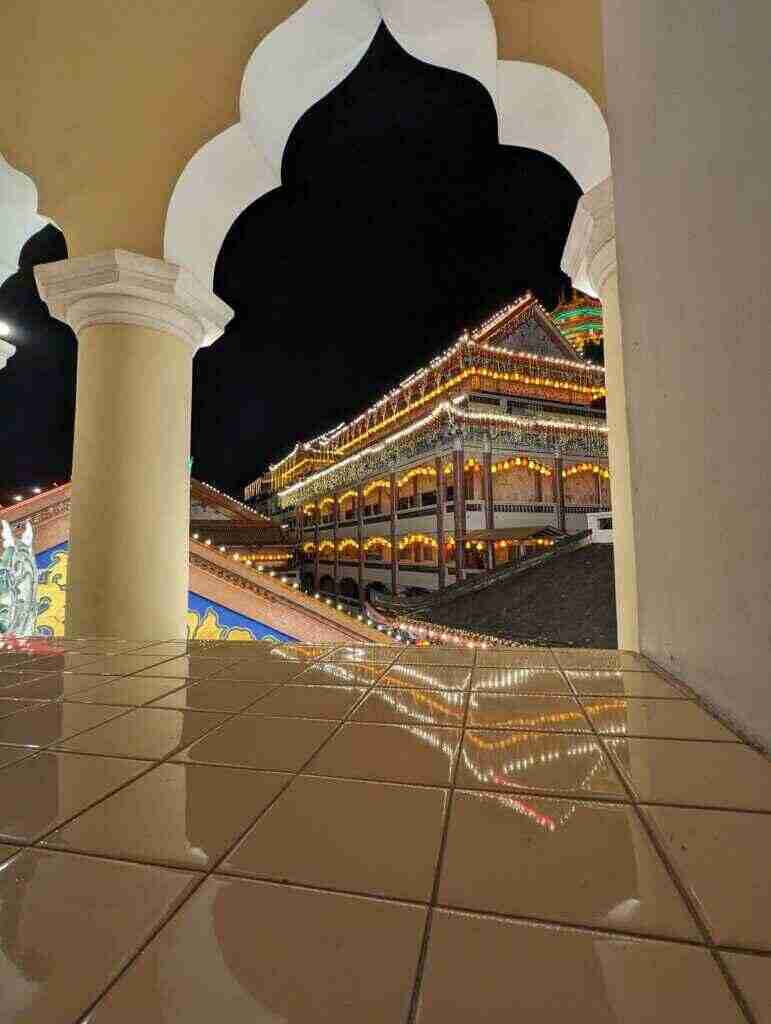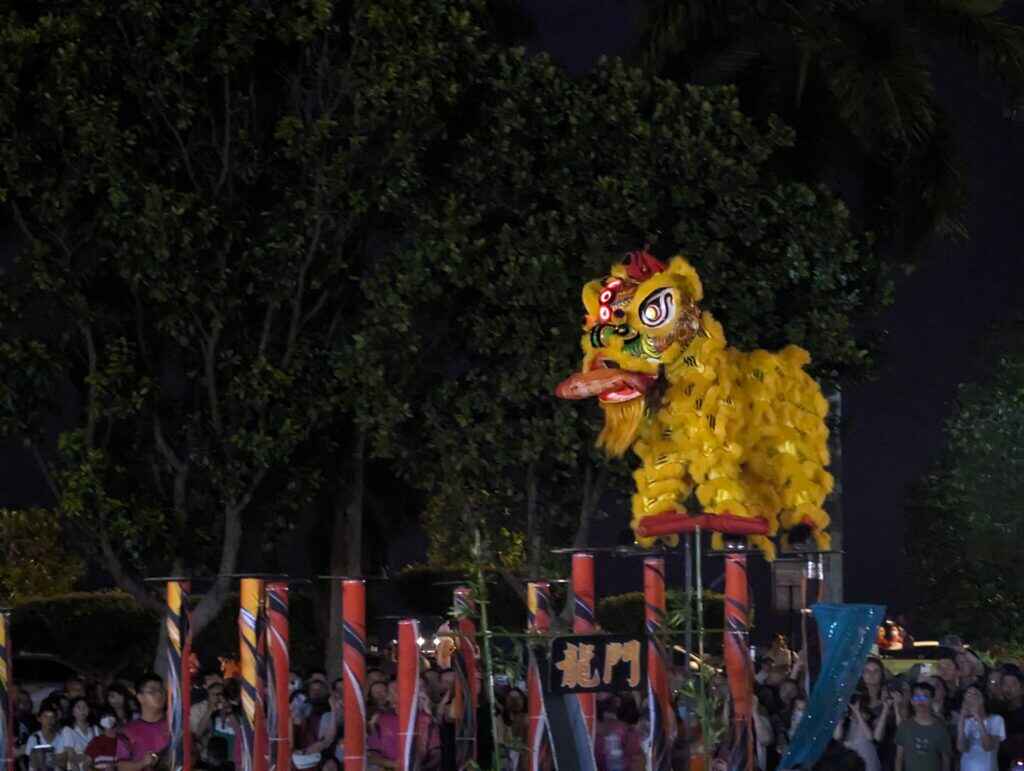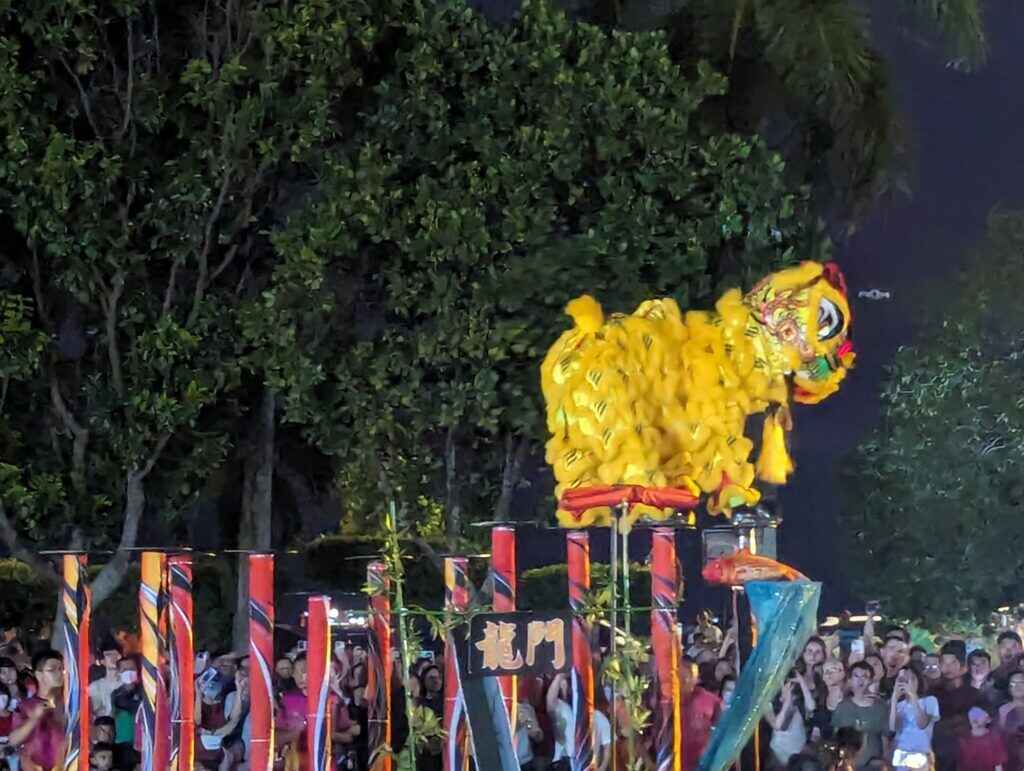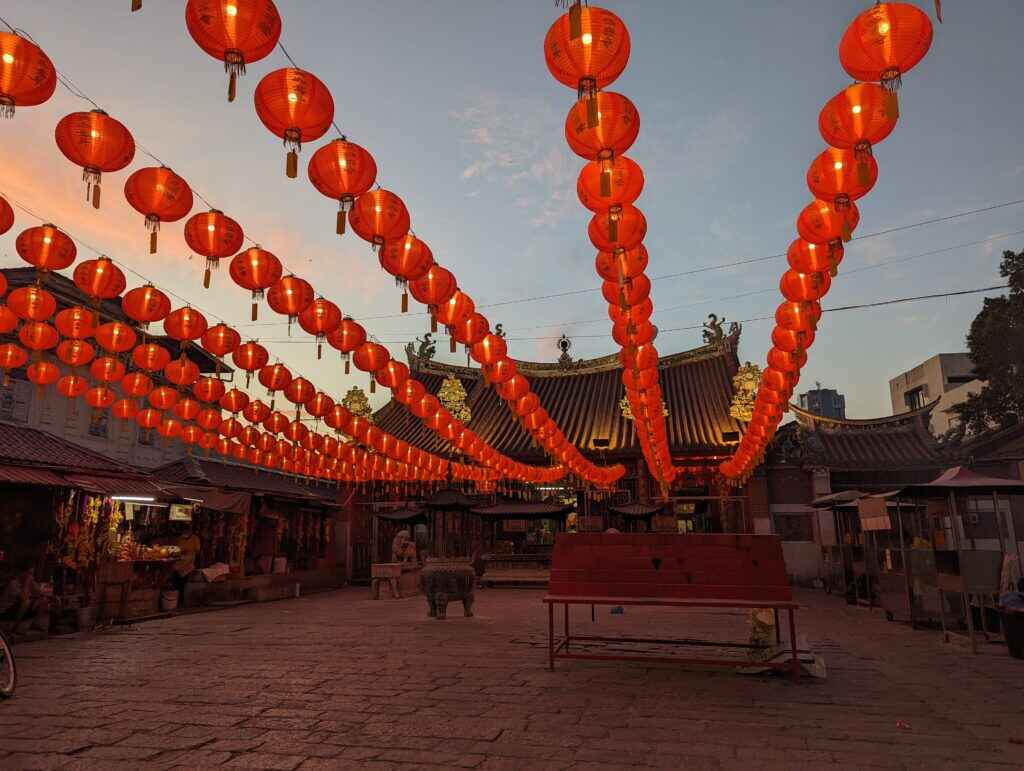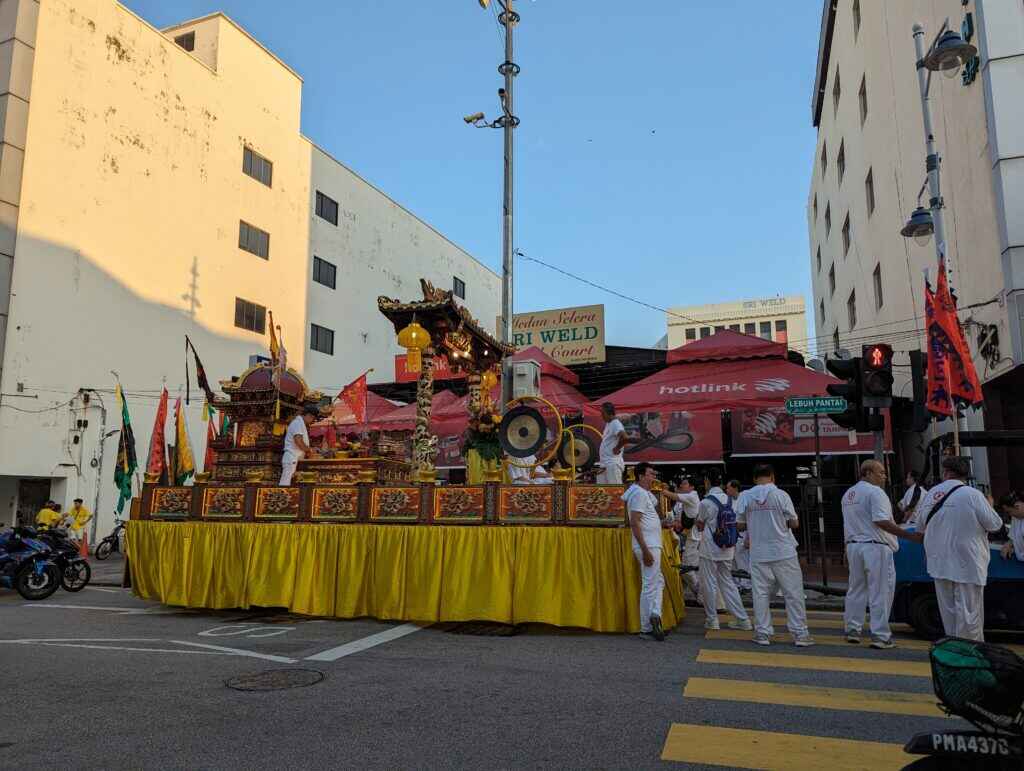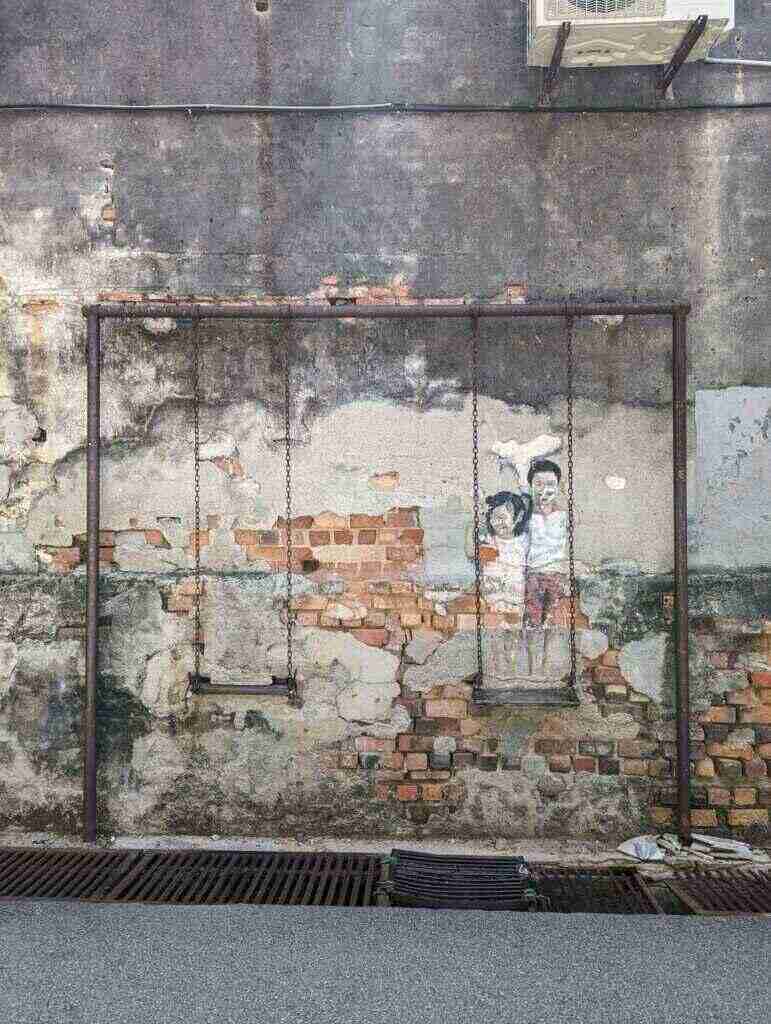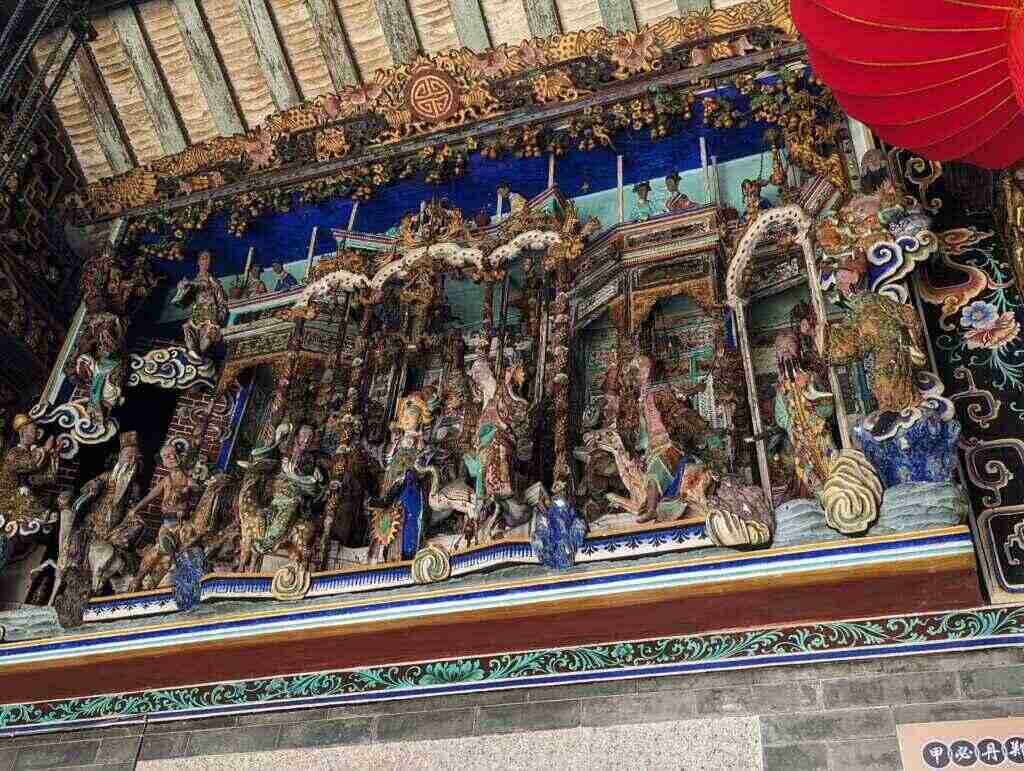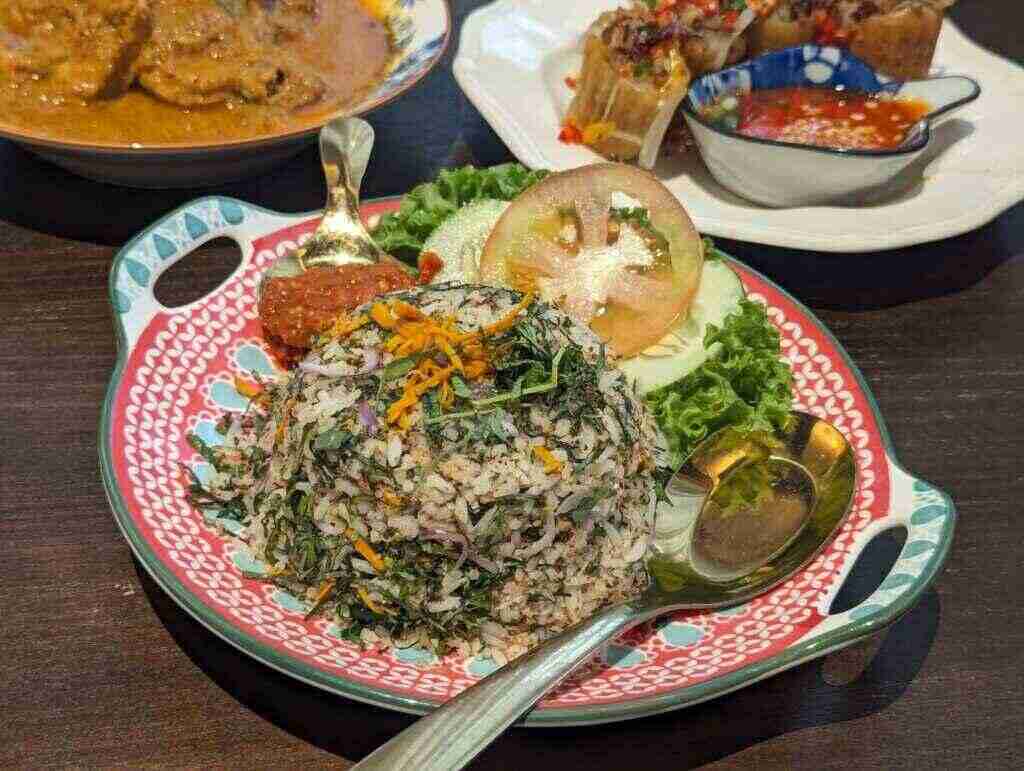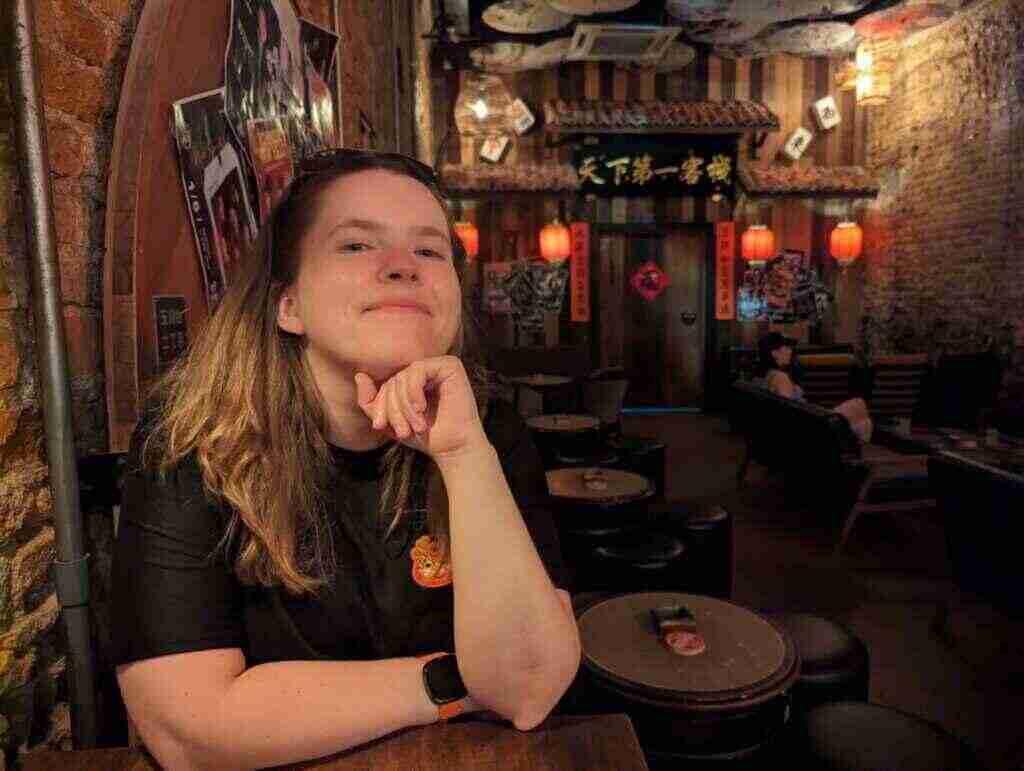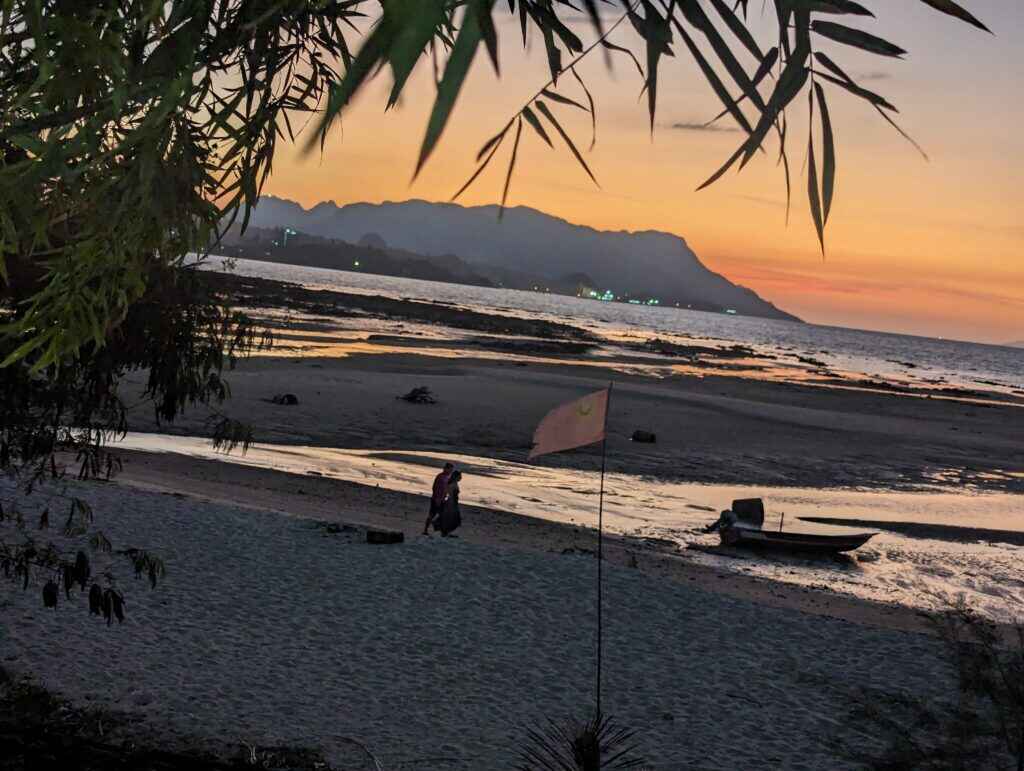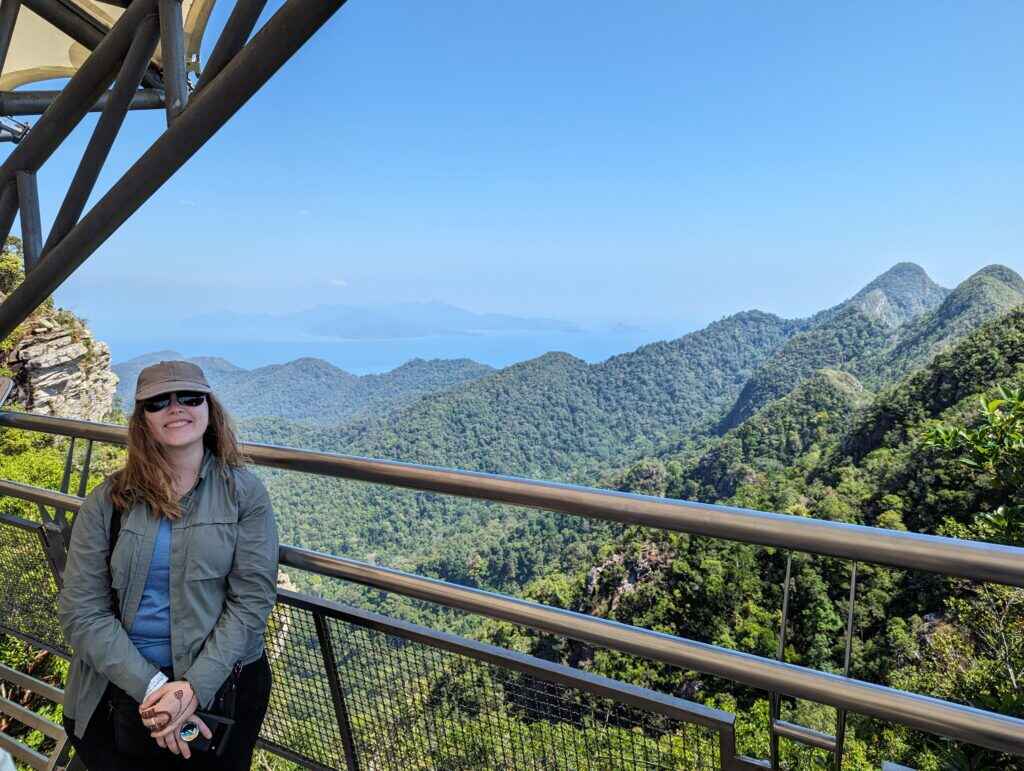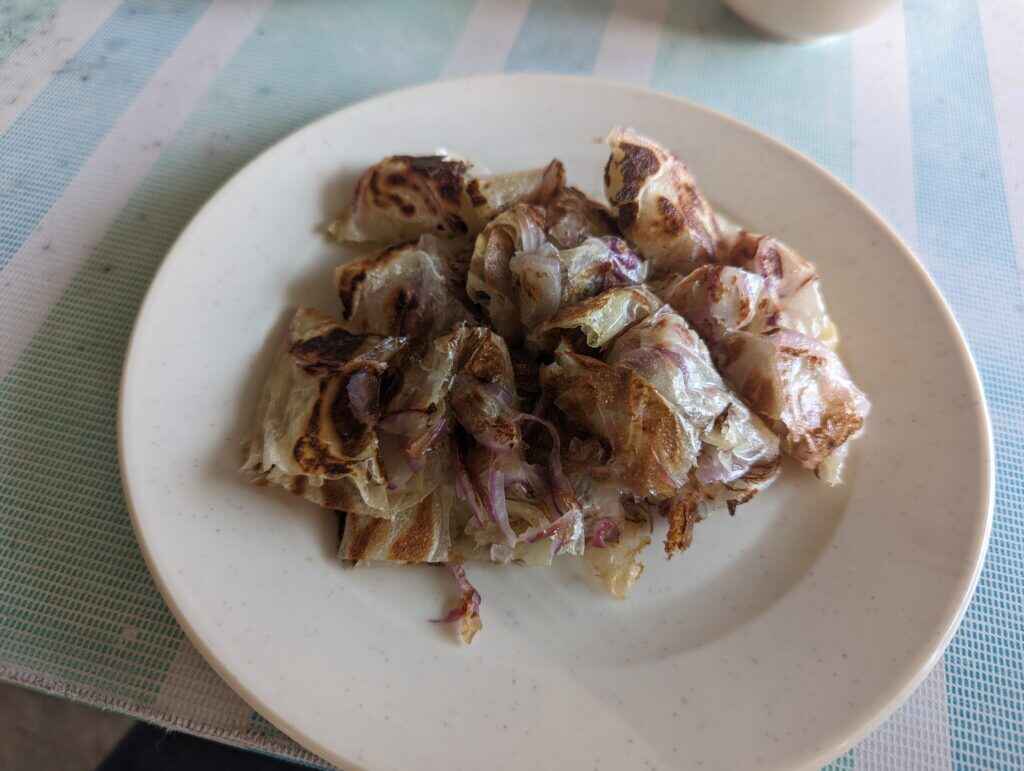While Malaysia may be one of the hottest and most humid countries we have ever visited, we enjoyed our time there. It is full of hidden gems, delicious food, and fun celebrations.
Melaka
We started our time in Malaysia with a bus from Singapore to Melaka, a UNESCO World Heritage City. The city was celebrating the Lunar New Year, with decorations everywhere to complement the colorful architecture and lovely street art.
Melaka is a beautiful and diverse city. We were looking at a church from the 1700s, finding directions to a Buddhist temple from the 1600s, and heard the call to prayer from the mosque built in the 1700s across the street.
Melaka is also home to a solid culinary scene. We tried some amazing local food at Wild Coriander, got delicious rotis at Patma’s, and got to learn about the cuisine of Sarawak at W&L.
Kuala Lumpur
I wasn’t sure what to expect in KL. Growing up, I always wanted to visit KL (no idea why my brain was focused on KL – must have been mentioned on the Travel Channel a lot). But, while traveling, we ran into quite a few people with some harsh comments on the city. They claimed it was dirty and not really worth your time.
Those people are 99% wrong. Kuala Lumpur is quite dirty, but it was worth every day we were able to give. It is a city full of hidden gems. Wander down an alley and there is amazing street art. Dare to enter a door with a random (but cute) logo and find some of delicious matcha in a crazy sleek setup. Go down the hallway in the shopping center and find a Michelin-recommended meal for ~$15. Meander up the stairs and find a speakeasy with some of the most creative cocktails in the world. Walk into an art gallery, follow your nose, find a line of 50 people in the back, and discover that some of the best pastries in the city are randomly hidden where few tourists are ever going to venture.
It is a city full of delights for anyone willing to look and is one of my favorite places we’ve visited. Here are some of our favorite things we found –
Kwai Chai Hong is a slightly hidden alley full of lovely street art, cute shops and restaurants, and places to play mahjong.
The Sri Maha Mariamman Temple is the “son” to the “mother” Batu Caves. During the Thaipusam Festival each year, the chariot goes from the temple to the Caves (son returning to mother).
The Batu Caves are one of the most revered Hindu sites outside of India. They honor Lord Murugan, the Hindu God of War. To get to the caves, we ventured up 272 stairs (all while avoiding the crazy number of monkeys). 100% worth it!
Guan Di Temple was built in the 1800s and is one of the main Buddhist temples in Chinatown. We visited during the Lunar New Year so the temple was especially busy.

The Central Market is full of local crafts and amazing food – some of my favorite things.
While venturing around Merdeka Square, we found the City Gallery. Hidden in the back of the gallery was a bakery with a crazy line for their cronuts. Obviously, being the food lovers we are, we got in line. The hojicha cronuts were worth the wait.
While wandering around, we found some of the most random, unexpected things. Lots of beautiful street art, crazy hidden shops (like the wonkiest bookstore I’ve ever entered), and a fellow doing portraits.
Malaysia is famous for speakeasies. We found a couple in KL and they had some of the most creative (and delicious) cocktails I’ve had the pleasure to enjoy. They even had some lovely mocktails for Carey. We tried two in KL. The best was Botakliquor. The most famous was PS150.
The National Mosque of Malaysia was an interesting place to visit. It is relatively new (built in 1965) and many of the signature decorative elements came from Morocco. While there, we spoke to a British woman who had moved to KL almost 40 years ago. She married a Malaysian man she met while backpacking, converted to Islam, and built her life in KL. We loved hearing her story and getting to learn more about life in Malaysia.
Thean Hou Temple is the most famous Buddhist temple in KL. It is gorgeous and a common place for people to get married.
Food in KL is a delight. It is another part of the world where Michelin gives stars to street food vendors up to fine dining restaurants. A few of our favorite places we ate –
- The Hunger Tapir – a vegetarian restaurant with fried “chicken” (mushrooms) that are the best we’ve ever had
- Limapulo: Baba Can Cook – a place that specializes in local food and is always packed. We got their signature Nyonya laksa and top hats. Both were absolutely divine.
- Sao Nam Vietnamese Cuisine – a Michelin rec Vietnamese restaurant. Delicious food and wonderful coffee.
- Niko Neko Matcha – a local tea shop with fantastic matcha. I found it when googling “best matcha in the world” after leaving Japan with a ridiculous love of matcha. if I hadn’t saved it in google maps, there is no way I would have found this place or dared walk in. It looks nothing from the outside, but is a lovely place with great matcha once you find it.
Dewakan translates to “food from God”. It is a 2 Michelin star restaurant with a great view. The chef used to work at Noma and that really shows through in the food and drinks. Garums, kombuchas, and many other forms of fermented deliciousness abound. We loved the meal (pigeon brains excluded – we have a strict no-brain policy, no matter the restaurant). My favorite dish was the smoked patin (type of catfish native to SE Asia). Carey’s favorite was the creative eggs and honey dish. The egg had been fermented in a sardine garum.
Penang
Penang is one of the main tourist destinations in Malaysia. The island is full of lovely nature, interesting history, and is home to some of the best food in the world. I’m not being hyperbolic – the local specialty of assam laksa is consistently ranked as one of the best foods in the world and we somehow inadvertently only ate at Michelin-recommended restaurants the entire time we were visiting.
Malaysia is also home to massive Lunar New Year celebrations. The celebrations go for 15 days and we were in Penang for the last few days of the holiday.
Our favorite thing we did in Penang was visit the Kek Lok Si Temple during their light show celebrating the New Year. It is the largest Buddhist temple in Malaysia. It took us almost 3 hours to explore (for context – most temples take us ~30 minutes to 1 hour).
We also got to go to the big festival on the 15th day of the lunar new year. They had a lion dance on stilts, an LED dragon dance, delicious local food, an orange tossing ceremony, and some fun local arts and crafts.
While enjoying the Lunar New Year festivities, we also get to celebrate Carey’s birthday.
A few of our other favorite things while in Penang –
The street art around Georgetown, the capital of Penang, is incredibly famous. There are a few iconic pieces (the kiddos on the a swing, the old motorcycle, etc.), but many others have been added over the years. We loved wandering down random streets and running into beautiful pieces of art.
We went on a street food tour to get a better idea of where to find the best food. We loved it and learned more about the iconic dishes. Assam laksa was my favorite and Carey loved the local pastries. We also got to try nutmeg juice which is delicious and refreshing in hot weather.
Georgetown is also very religiously diverse. One street is known as the “Street of Harmony” because as you wander down the street you see an church, a Buddhist temple, a Hindu temple, and a mosque. We enjoyed exploring different temples, churches, and mosques throughout the city.
The Pinang Peranakan Mansion is a heritage house that is open for the public to wander. It is slightly less crowded than the Blue Mansion (where part of Crazy Rich Asians was filmed) and the design is fascinating.
The jetties are another famous place to explore in Georgetown. We wandered and enjoyed some shave ice (because there is only so long you can walk outside in this level of heat and humidity before needing a break with shade and/or AC).
We took a bike tour out in the countryside, wandering through palm oil plantations, durian tree groves, and seeing a much less touristy side of the island.
Food highlights –
- Auntie Gaik Lean’s Old School Eatery is home to the most delicious rice I have ever had and she received a Michelin star for that particular dish (Nasi Ulam). It cost about USD 30 to try 5 of her fantastic dishes – the cheapest Michelin-starred (not just recommended, but starred) meal I have ever seen.
- Little India Famous Samosa is an inconspicuous hawker stall with a Michelin rec. The samosas are some of the most delicious I have ever had and it cost less than 75 cents for 3.
- Bao Teck Tea House is a classic Cantonese dim sum restaurant with an impressive tea menu. Carey adores dim sum and loved this place. I was a big fan of the pandan and coconut bao. They also have a Michelin rec.
- Jawi House Cafe Gallery received a Michelin rec for their biryani. We tried the jackfruit and it was absolute heaven.
- China House is home to the most impressive kombucha menu I have ever seen. They took over an old shophouse and turned it into a coffee shop/bakery/wine bar/cafe/art gallery/library (all depending on the room you wander into). The most creative booch we tried was the mandarin and sarawak pepper.
- Speakeasies are also popular in Penang. Magazine 63 has an adorable setup and Backdoor Bodega was ranked among the Top 100 bars in Asia. To reach Backdoor Bodega, we had to venture through a clothing store to reach the bar. They had a creative take on a gimlet fashioned after the assam laksa, a local special, that included shrimp paste. While it wouldn’t be my normal drink pick, it was definitely interesting to try.
Langkawi
Langkawi is another place that has been on a lot of “up-and-coming travel destination” lists. It is an archipelago of 99 islands, with the main island about a 40-minute flight from Penang.
If we were beach people, we probably would have loved this place. We are not beach people and it was incredibly hot. While it was not my favorite place, we found a few things we really enjoyed –
The mangroves are incredible. They are a UNESCO site and are some of the tallest in the world. The area is home to monkeys, eagles, crabs, and mud fish that walk through the mud on their flippers.
The beaches are truly beautiful and are far less touristy than other places we’ve visited in SE Asia.
The island is home to the longest cable car in the world. It offers a lovely view.
Street food is still delicious, with rotis and coconuts being the best.







